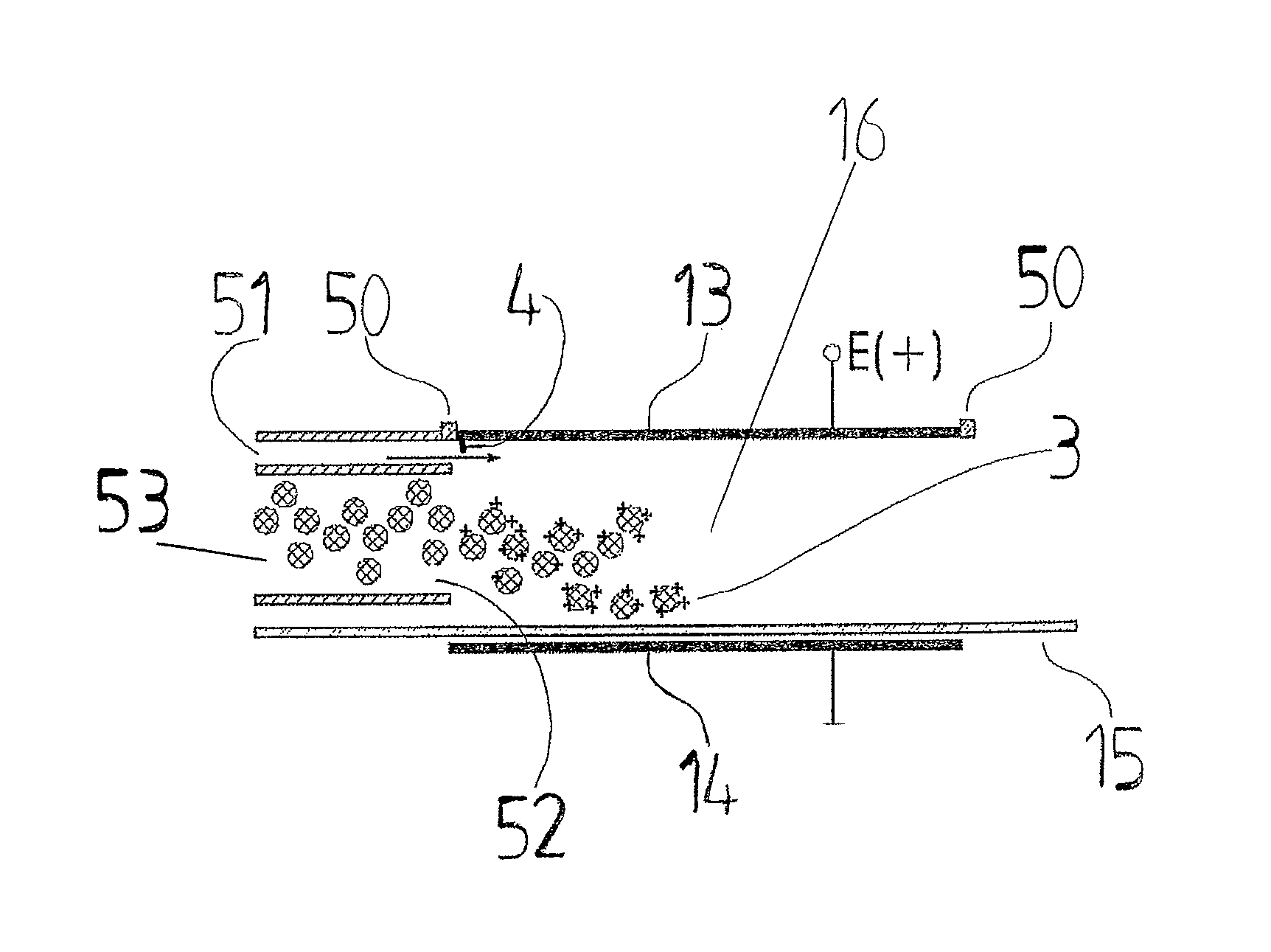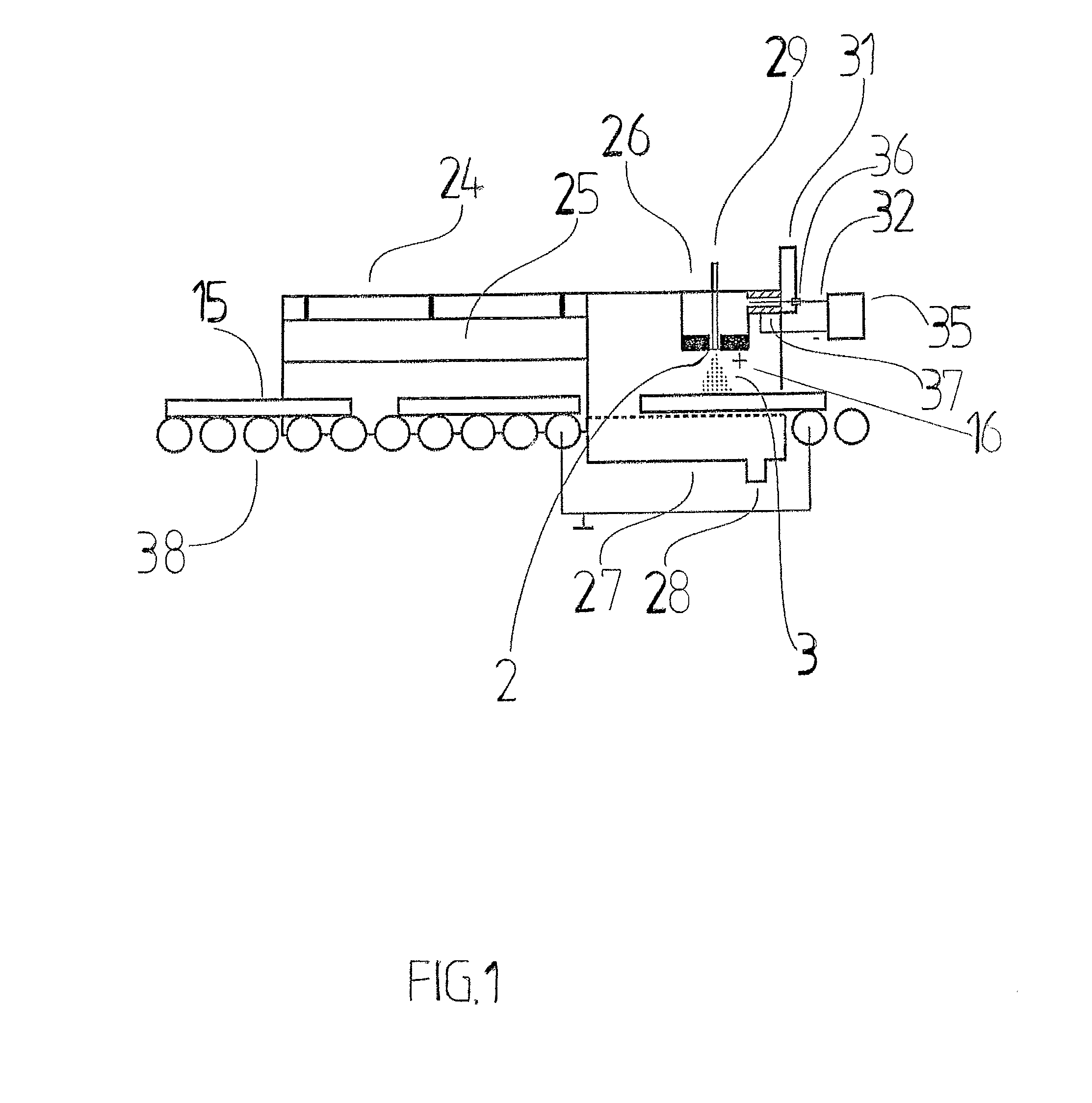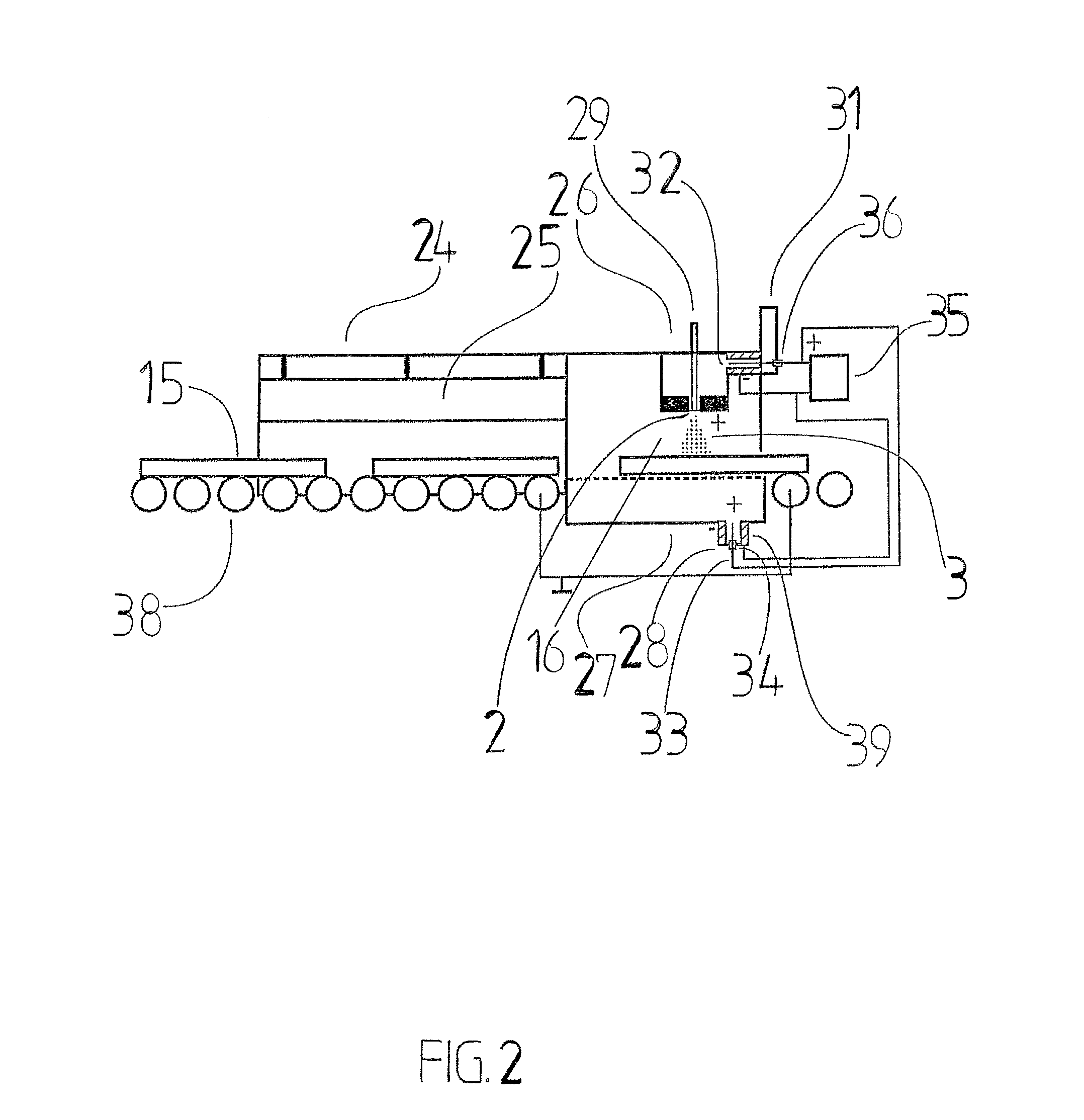Apparatus and method for coating glass substrate
a technology of glass substrate and apparatus, which is applied in the direction of spraying apparatus, coating, induction-charging spraying, etc., can solve the problems of slow coating growth rate, difficult control of the uniformity of the produced coating, and limited utilization of the coating process. achieve the effect of high coating growth rate, and high coating growth ra
- Summary
- Abstract
- Description
- Claims
- Application Information
AI Technical Summary
Benefits of technology
Problems solved by technology
Method used
Image
Examples
first embodiment
[0017]FIG. 1 shows, in principle, the invention, where the formation of a coating on a of glass substrate 15 is carried out in a coating apparatus. Flat glass substrate 15, with a typical size of 1100 mm×1400 mm, moves from right to left. The glass substrate 15 first enters a heating furnace 24 including a heater 25. The heater 25 may be based on radiation, convection or similar. In the heating furnace 24 the glass substrate 15 heats to a temperature which is higher than the annealing point (annealing temperature) of the glass substrate 15. The annealing point depends on the composition of glass substrate 15 and is typically about 500° C. for soda-lime glass and about 1100° C. for fused silica. The glass substrate 15 then enters the coating unit 26 where droplets 3 are deposited on the glass substrate 15 or guided towards the glass substrate 15 in a deposition chamber 16. An air floating device 27 floats the glass substrate 15 by a gas blowing motion, the gas being fed through condu...
second embodiment
[0019]FIG. 2 shows, in principle, the invention where the glass heating movement and coating is carried out in the same way as with the previous embodiment shown in FIG. 1. In addition a second corona charger 33 is used to charge the air used in the air floating device 27. The second corona electrode 33 is equipped with a second an electrical insulator 34 and with a second counter electrode 39. FIG. 2 shows an embodiment where the second corona charger 33 uses the same power supply 35 as the first corona charger 32. It is, however, obvious for a person skilled in the art that also another power supply, with different voltage, may be used. It is essential to the invention that the air supporting the glass substrate 15 charges the bottom surface of the glass substrate 15 with the same polarity as the droplets 3 are charged. The rejection force caused by the charges with same polarity decreases the formation of the coating to the bottom surface of the glass substrate 15. Obviously, als...
third embodiment
[0020]FIG. 3 shows, in principle, the invention where the electrostatic forces for the droplet deposition and guiding are enhanced by charging the top surface of the glass substrate 15 with a charge opposite to the charge of the droplets 3. Preferably the charging is carried out by charging air passing through the conduit 40 by a third corona charger 41. The third corona charger 41 is provided a third electrical insulator 42 and with a third counter electrode 43. As shown in FIG. 3, the third corona charger 41 has an opposite polarity to the first corona charger 32. FIG. 3 shows an embodiment where the third corona charger 41 uses the same power supply 35 as the first corona charger 32. It is, however, obvious for a person skilled in the art that also another power supply, with different voltage, may be used.
[0021]FIG. 4, shows, in principle, a fourth embodiment where a separate electric field is used to enhance the deposition or guiding of the charged droplets 3. The droplets 3 are...
PUM
| Property | Measurement | Unit |
|---|---|---|
| Fraction | aaaaa | aaaaa |
| Force | aaaaa | aaaaa |
| Energy | aaaaa | aaaaa |
Abstract
Description
Claims
Application Information
 Login to View More
Login to View More - R&D
- Intellectual Property
- Life Sciences
- Materials
- Tech Scout
- Unparalleled Data Quality
- Higher Quality Content
- 60% Fewer Hallucinations
Browse by: Latest US Patents, China's latest patents, Technical Efficacy Thesaurus, Application Domain, Technology Topic, Popular Technical Reports.
© 2025 PatSnap. All rights reserved.Legal|Privacy policy|Modern Slavery Act Transparency Statement|Sitemap|About US| Contact US: help@patsnap.com



